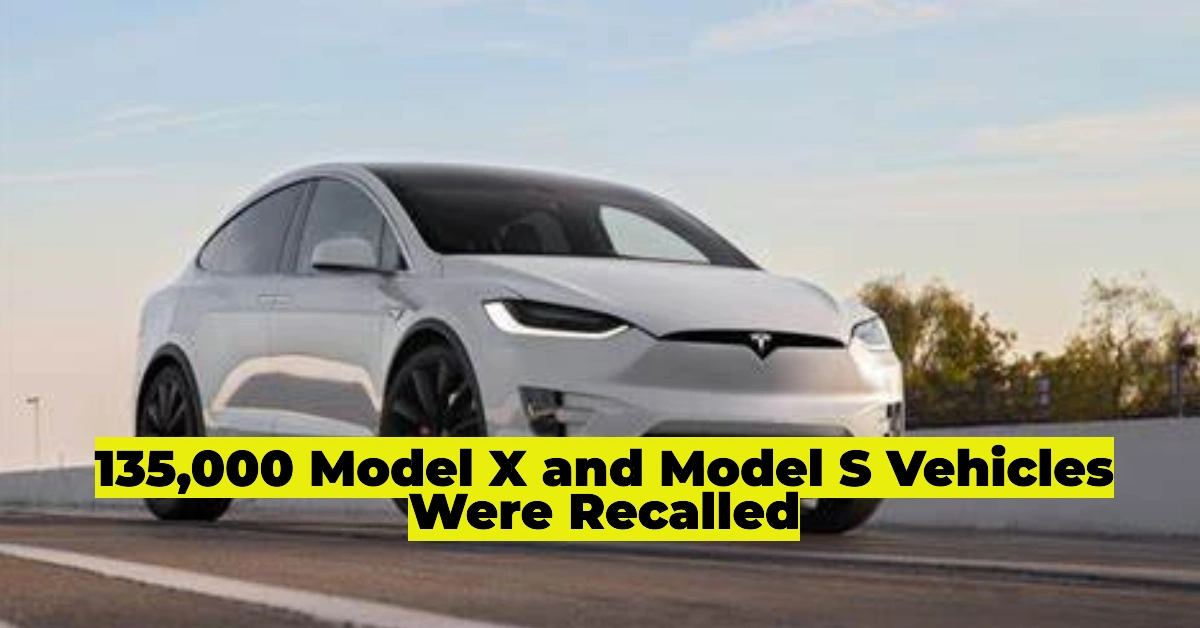Tesla, the trailblazing automaker that has revolutionized the electric vehicle (EV) industry, is no stranger to the headlines. With its meteoric rise in market value, cutting-edge technology, and a cult-like following, Tesla has positioned itself as a leader in sustainable transportation. However, despite its innovations and record-breaking deliveries, the company now faces a significant challenge: a recall of 135,000 Model X and Model S vehicles. But why is this happening? Is there a critical safety flaw, and how will it impact Tesla’s future? Let’s dive into the details.
Table of Contents
What Led to the Tesla Recall?
The recall, mandated by the National Highway Traffic Safety Administration (NHTSA), centers around a critical issue affecting the touchscreen interface of Tesla’s flagship Model S and Model X vehicles. The problem stems from the Media Control Unit (MCU), which contains an embedded MultiMediaCard (eMMC) storage device that wears out over time. This defect leads to screen failures, posing safety risks to drivers and passengers.
Ducati Issues Recall for 2025 Panigale V4 Motorcycles Over Rear Brake Failure Risk
Jeep Recall Alert: Over 63,000 Cherokees Could Roll Away or Lose Power
Over 317,000 Ram HD Trucks Recalled for Serious Braking System Issue: What You Need to Know
The Risks Posed by the Faulty Touchscreen
The eMMC flash memory chip in Tesla’s infotainment system is responsible for running the vehicle’s touchscreen display, which controls various essential functions, including:
- Backup Camera Display – A failure could prevent drivers from seeing their rearview camera feed, increasing the risk of accidents.
- Defrost and Defogging Systems – Without access to these climate controls, visibility could be compromised in cold or humid conditions.
- Autopilot and Driver Assistance Features – A failing touchscreen could limit or disable driver assistance systems, affecting Tesla’s semi-autonomous driving capabilities.
Given these safety concerns, the NHTSA urged Tesla to take immediate action. While Tesla initially resisted, it ultimately complied with the recall request.
Tesla Issues Recall for 694,000+ Vehicles Over Tire Pressure Warning Issue
Kia Issues Recall for Over 22,000 EV9 SUVs: Missing Seat Bolts Pose Safety Risk
BlendJet Recall 4.8 Million Portable Blenders Pulled for Fire and Blade Hazards
Which Tesla Models Are Affected?
The recall specifically impacts:
- Model S Sedans (2012-2018 model years)
- Model X SUVs (2016-2018 model years)
These vehicles were built using an older-generation MCU with an 8GB eMMC chip, which has been identified as the source of the problem. Newer Tesla models now use improved hardware, mitigating this issue.
What Tesla Owners Need to Do
If you own an affected Tesla Model S or Model X, here’s what you should do:
- Check for a Recall Notice – Tesla will notify affected owners via email or through their Tesla account.
- Schedule a Service Appointment – Tesla service centers will replace the faulty eMMC module free of charge.
- Monitor System Performance – If you experience unresponsive screens, lagging performance, or sudden touchscreen failures, contact Tesla support immediately.
How Does This Impact Tesla’s Reputation?
While Tesla’s brand is synonymous with innovation, its history with recalls and quality control issues has been a concern. Previous recalls have included:
- Suspension Issues – Model S and Model X vehicles faced suspension problems that could lead to steering failures.
- Seatbelt Defects – Certain Tesla models were recalled due to improperly installed seatbelts.
- Battery Fire Risks – Some Tesla vehicles required software updates to prevent battery overheating and potential fires.
Despite these setbacks, Tesla has maintained strong customer loyalty. Many Tesla enthusiasts see recalls as a normal part of automotive innovation, while critics argue that the company must prioritize quality control over rapid expansion.
The Future of Tesla: What’s Next?
Tesla continues to dominate the EV market, but this recall highlights the challenges that come with scaling a high-tech automotive company. Moving forward, Tesla is expected to:
- Improve hardware durability in future models.
- Enhance software updates to detect and mitigate hardware failures.
- Expand service capabilities to address recalls and maintenance issues more efficiently.
Final Thoughts
While the recall of 135,000 Model X and Model S vehicles may seem like a setback, it also underscores Tesla’s commitment to proactively addressing safety concerns. If you own an affected vehicle, taking action promptly will ensure your Tesla remains safe and functional. As Tesla continues to innovate, one thing remains clear: the company’s journey is far from over, and its influence on the automotive industry is only growing.
Stay tuned for more updates as Tesla navigates this challenge and pushes the boundaries of what’s possible in electric mobility.











One thought on “Tesla’s Massive Recall: Why 135,000 Model X and Model S Vehicles Were Recalled & What It Means for Owners”